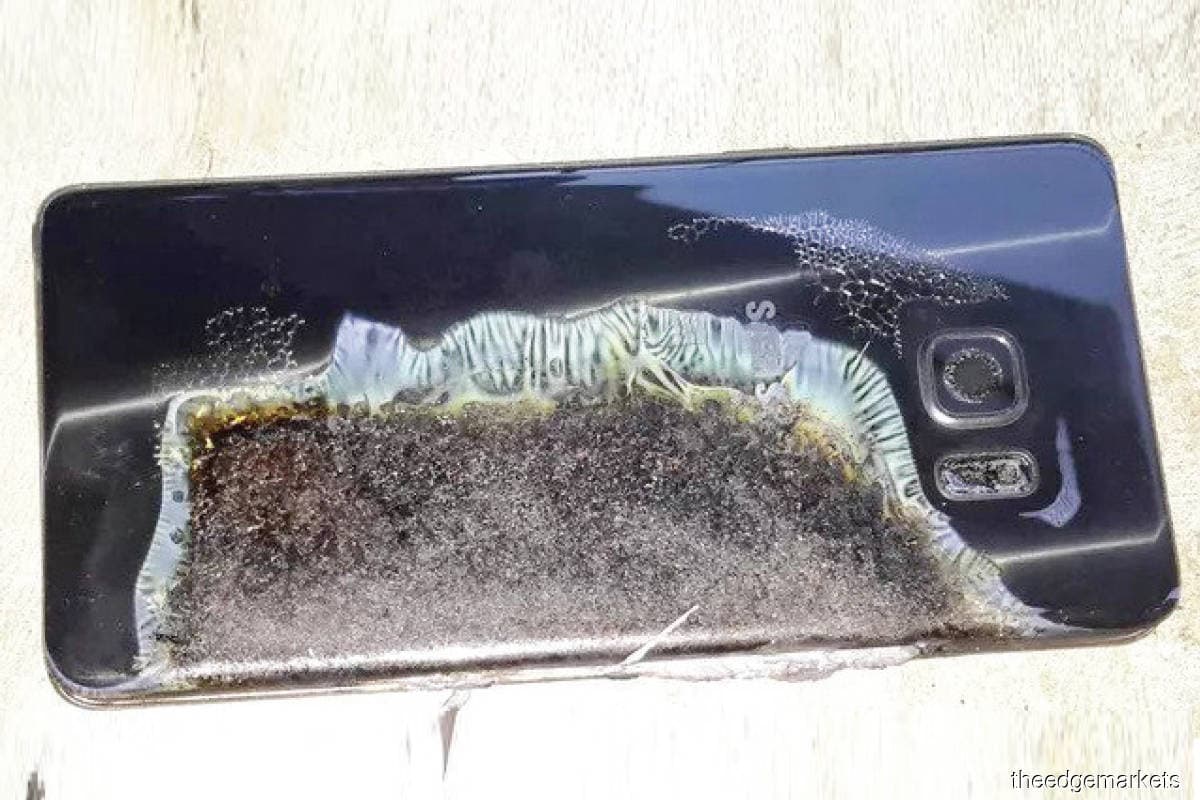
This article first appeared in Digital Edge, The Edge Malaysia Weekly on November 1, 2021 - November 7, 2021
Just last month, a Samsung Galaxy A21 phone caught fire on a plane in New Orleans. Shortly after the plane landed, the passenger’s cellphone began overheating and generating sparks, prompting the use of fire extinguishers and the immediate evacuation of everyone on board. Thankfully, no one was seriously injured, with only two passengers suffering minor injuries.
Although the case is still under investigation, it has dug up fearful memories of the Samsung smartphone blasts that occurred five years ago. Back in late 2016, Samsung’s Note 7 smartphones were infamous for combusting spontaneously, causing an estimated 100 property damage and burning cases in the US alone. This prompted a global recall of 2½ million of the South Korean company’s products, resulting in its losing an estimated US$5.3 billion.
A few months later, both internal and external investigations pointed to the phones’ lithium-ion batteries as the lead cause. In some phones, there was not enough room between the heat-sealed protective pouch around the battery and the rest of the phone’s innards. In others, the battery cells either had sharp protrusions or were missing insulation tape — greatly increasing the risk of separator damage and short circuits.
Since then, Samsung has implemented an eight-point battery safety check for all of its smartphones. Steps include visually inspecting the battery both physically and using X-ray devices, as well as tests targeting the batteries’ physical durability and their ability to withstand charges and discharges. The batteries also undergo constant voltage tests throughout the manufacturing process, from the bare-bones component level to the final assembled device.
Samsung has gone to great lengths to prevent a repeat of the 2016 incidents. So, the recent New Orleans case seems out of place. Further research into airline fire incidents found, however, that the issue might have more to do with lithium-ion battery technology rather than the Samsung brand itself.
According to the US Federal Aviation Administration, there have been a total of 36 global lithium-ion battery-related fire incidents in the airline industry so far this year. Yet, cellphone combustion accounts for only a quarter of these incidents, with the rest involving laptops, e-cigarettes, vaping devices and battery pack combustions. This also explains why airlines limit the number of lithium-ion batteries carried per person, with most power banks banned from flights entirely.
Outside of airline incidents, battery combustions are not limited to Samsung devices either. This year alone, there have been multiple reports of smartphone blasts occurring in brands such as Oppo, Xiaomi and Vivo, many of which were a result of customers misusing or tampering with the product itself.
Despite these cases, safety reports from governments worldwide still classify lithium-ion batteries as generally safe to use and unlikely to fail, as long as the batteries are undamaged, non-defective and installed correctly. Users should charge these batteries according to product specifications and avoid storing batteries near combustible materials to minimise the risk of a fire.
Save by subscribing to us for your print and/or digital copy.
P/S: The Edge is also available on Apple's AppStore and Androids' Google Play.